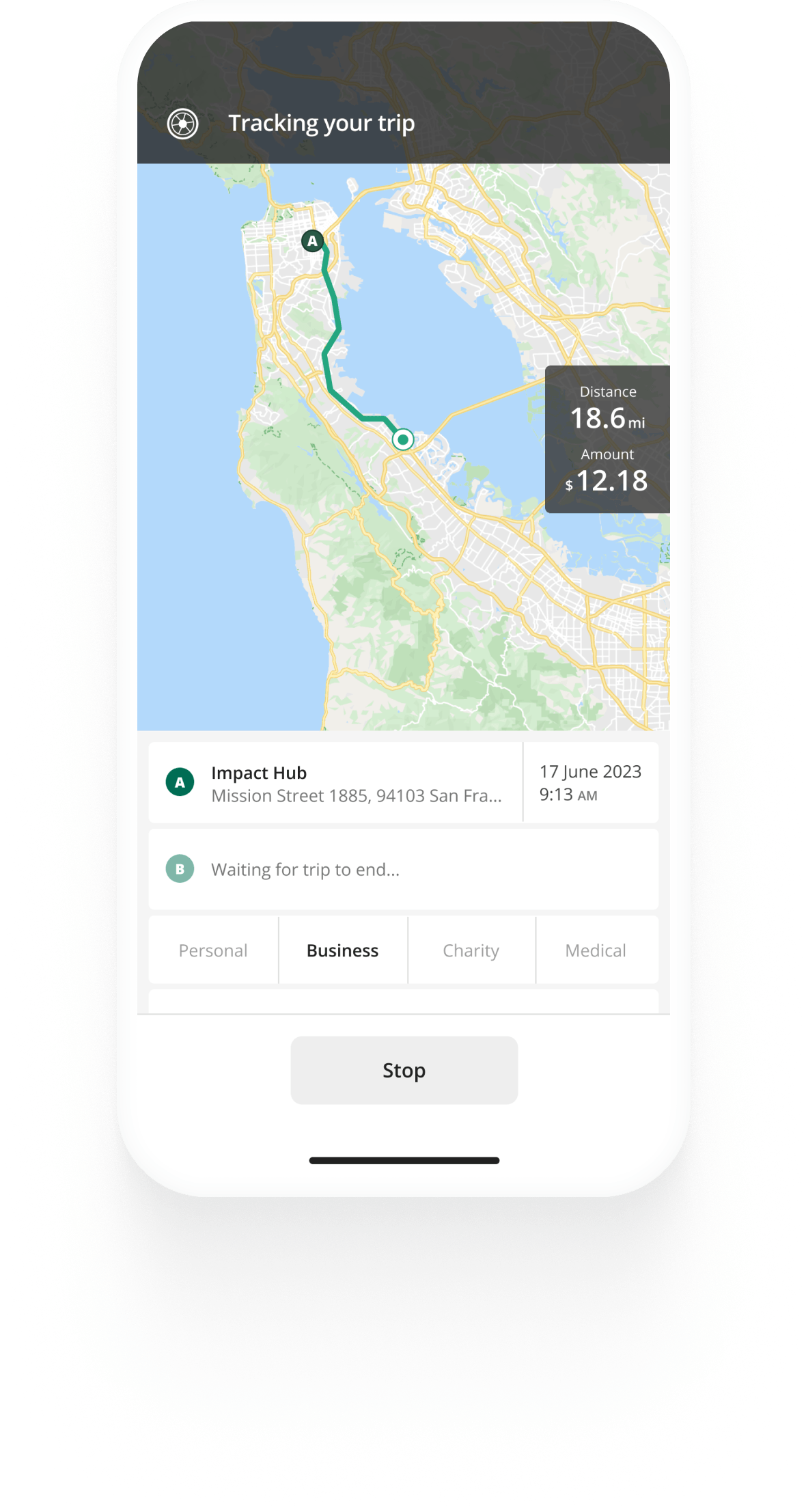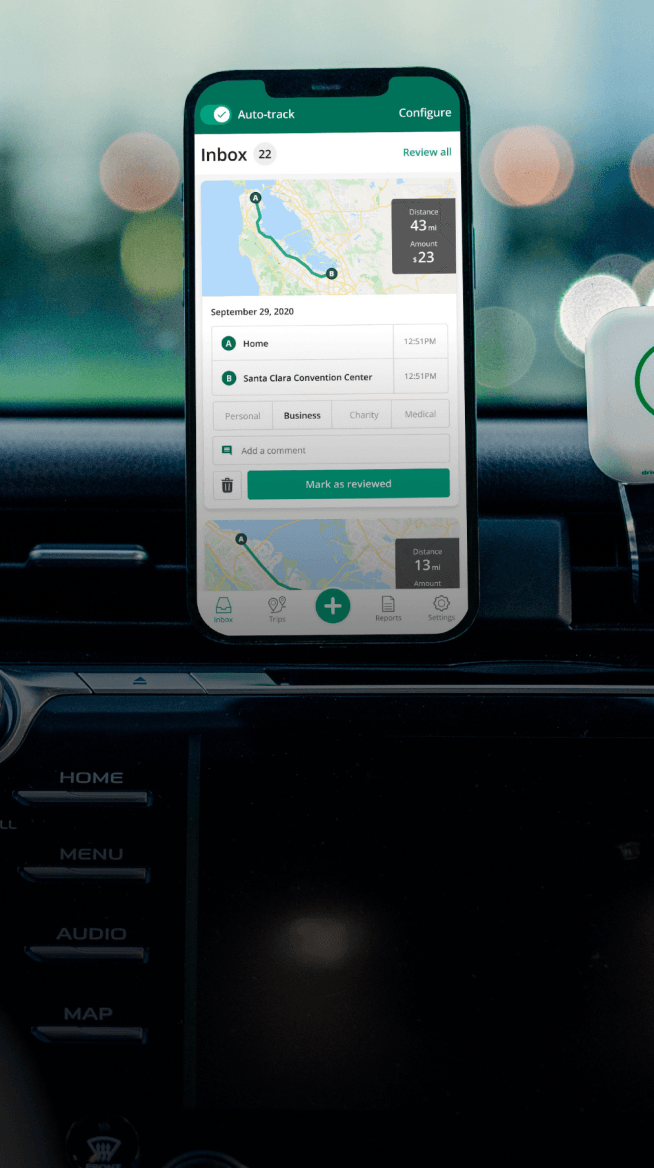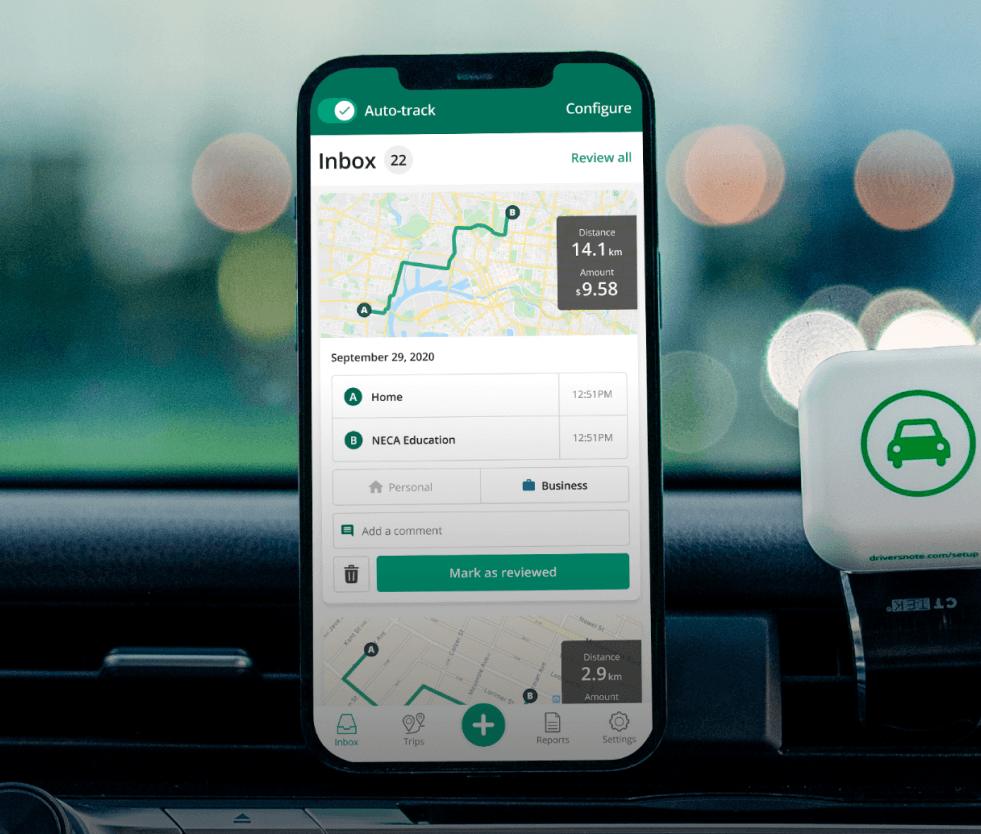Track mileage automatically
Get startedIRS Mileage Log Requirements
In this article
Depending on your situation, you might have to meet different IRS mileage log requirements, legal or otherwise, in order to keep compliant records.
Your employer might have specific requirements for mileage reporting, and the IRS also has rules that apply to business owners and self-employed.
In this article, we look at mileage logging from both the perspective of an employee and the self-employed.
How the IRS defines adequate records for an audit-proof mileage log
Regardless of the circumstances of your employment, you will likely be asked to record the following:
- The mileage for each business use (read this article if you're confused about the difference between business miles vs. commuting miles)
- The total mileage for the year (business + personal)
- The time (date will do), place (your destination), and business purpose of each trip
- Odometer readings at the start and end of the year
It’s also required that the mileage logs be timely. This means that you must log mileage at or near the time of the trip—anything that's updated weekly is considered good enough.
In any case, vague or estimated mileage may not hold up under an audit, which is why accurately and consistently tracking and logging your mileage is so important.
Download a free IRS mileage log template [PDF, Excel, Sheets] here.


Mileage tracking made easy
Trusted by millions of drivers
Automate your logbook Automate your logbook

Automatic mileage tracking and IRS-compliant reporting.
Get started for free Get started for freeMileage log formats accepted by the IRS
The IRS accepts mileage logs kept in the following formats:
- Pen-and-paper
- Account books
- Digital spreadsheets
- CSV
- XLSX (Microsoft Excel)
In other words, the format does not matter as long as the right records are present (see the records section above).
The IRS provides a paper template for logging mileage, but manual trip logging is now largely considered an outdated way of keeping mileage records.
If you’re employed, your employer should inform you of the records they require and the mileage log formats they can process.
Does the IRS require odometer readings?
The law currently does not require you to log odometer readings except at the beginning and end of each year and when you start using a new vehicle.
However, keep in mind that your employer might ask you to record odometer readings more frequently.
IRS mileage tracking requirements
There are no requirements for tracking your mileage, except that you have to record the mileage of each trip.
That means either:
- Recording the odometer at the beginning and end of the trip, or
- Tracking/recording your trips differently, for instance, using a GPS device or a mileage tracking mobile app.
The easiest way to satisfy the IRS mileage tracking requirements is to use a mileage tracking app.
There's a range of apps designed to simplify tracking and recording your mileage in a compliant manner, such as Driversnote. Driversnote works for iOS and Android and for both self-employed and employed individuals.
Should I track personal mileage?
If you drive your vehicle(s) for both business and personal purposes, you need to be able to prove the business portion of use. You work this out as a percentage of miles driven for both business and personal use. That means keeping a log of all trips and then calculating the share used for business. Working the split out correctly, for example, by automatically dividing trips into business and personal in your mileage app, can help avoid over- or under-claiming, either from your employer or at tax time.
Keeping mileage logs as an employee
As an employee, you might be asked to prove your expenses to the IRS down the line, which can include mileage. This can happen due to no fault of yours, so it’s generally a good idea to keep copies.
Are you wondering if you did your mileage log properly? Using a digital mileage tracker increases the likelihood of having adequate reports created automatically and available if needed.
What to do if you get audited?
If you get audited, the IRS can request audit records, which are accepted in any of the abovementioned formats.
To speed up the process and avoid errors, order your mileage logs and records at least by year. Log your trips at least once a week to ensure you don’t miss out on any reimbursement.
FAQ

Tired of logging mileage by hand?
Effortless. IRS-compliant. Liberating.
IRS Mileage Guide
- For Self-Employed
- For Employees
- For Employers
- Mileage Log Requirements
- How To Claim Your Mileage On Taxes In 5 steps
- Calculate Your Reimbursement
- Is Reimbursement Taxed?
- Current Mileage Rates
- Historical IRS Mileage Rates
- IRS Medical and Charitable Mileage
- California Mileage Reimbursement
- How is the IRS Mileage Rate Calculated